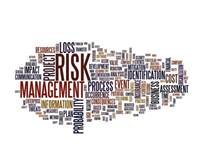A Generic Scorecard calculates the probability of default (PD) and Rating for each company within a country (using SAS for Big Data).
PD is dependent on different micro-economic indicators, e.g. demographic indicators (legal form, number of employees, age of company etc.), financial indicators (revenue, profit, liabilities etc.), trade indicators (late payment, sum of invoices etc.), negative indicators (audit remarks, blocked accounts etc.) and macro-economic indicator – risk of industry (RI).
RI is dependent on fundamental macroeconomic variables within markets: GDP, DAX-30, interest rate of European Central Bank, rate of inflation, unemployment, oil price, Euro/USD exchange rates etc.
The presentation shows the relationship between the changes of fundamental macroeconomic variables in markets and the changes from RI, PD and therefore also Rating for individual companies in 12 European countries. For example, for Germany we collected the macroeconomic data for 42 quarters and developed the forecasting models of risk for 11 industries: mining, construction, manufacturing etc.
These forecasting models using EViews, with Vector Autoregression method (VAR), can simulate different macroeconomic scenarios and stress test for several quarters ahead. Only by combining the microeconomic and macroeconomic indicators can we achieve a reliable forecast with EViews for future scenarios.
 About the Author: Dr. Jacob Margolis is a modeler and analyst with many years of experience, working at IBM, Schober, Dun & Bradstreet and Bisnode, in direct marketing, CRM, credit risk management and analytics for B2C and B2B customers on an international level particularly within Europe (Nordic, DACH, CE). He performs regularly as a speaker at conferences for SAS (Risk Scorecards development, modeling and rank mining), EViews (Time Series Analysis for macroeconomic models) and has several publications on Big Data and Data Mining.
About the Author: Dr. Jacob Margolis is a modeler and analyst with many years of experience, working at IBM, Schober, Dun & Bradstreet and Bisnode, in direct marketing, CRM, credit risk management and analytics for B2C and B2B customers on an international level particularly within Europe (Nordic, DACH, CE). He performs regularly as a speaker at conferences for SAS (Risk Scorecards development, modeling and rank mining), EViews (Time Series Analysis for macroeconomic models) and has several publications on Big Data and Data Mining.
Source: Eviews – IHS 1st User Meeting, Frankfurt 21. – 22. October 2014






















